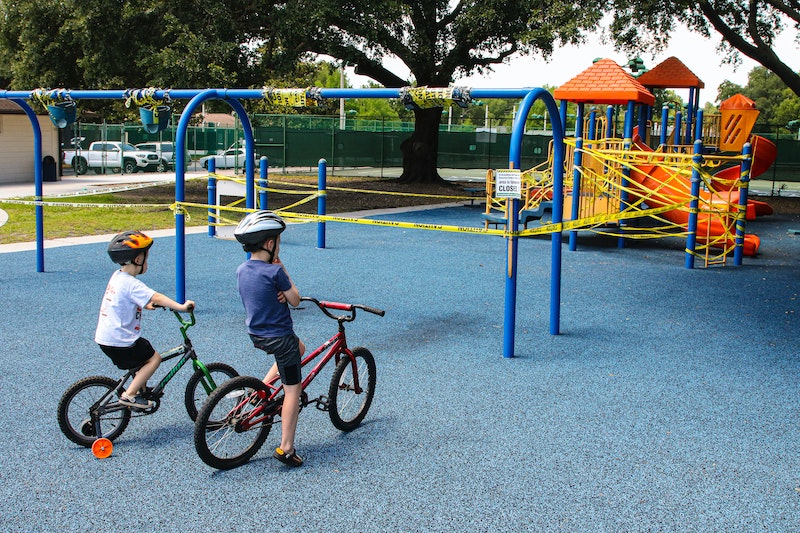Gross Motor Skills and Child Development
During the course of an average day, we don’t give gross motor skills much thought, but they are integral to activities such as maintaining balance, walking, sitting upright, jumping, and throwing objects. Gross motor skills require the use of large muscle groups that coordinate body movements, and can be critical to child development. Gross motor skills are building blocks to other abilities, including physical strength, reaction time, coordination, and general body awareness. For children with underdeveloped or weak gross motor function can cause a physical toll when engaging in everyday activities such as recess, gym class, sports or even simple play. In addition, the emotional stress and negative impact on their self-esteem can carry forward beyond childhood development and into adolescence and eventually into adulthood. An evaluation from a physical therapist or occupational therapist is recommended when a child displays challenges with gross motor skills in many areas of activity, as cited by Healthline.com. Following a therapist’s assessment, early treatment can help close gaps. Child based physical therapy offers structured guidance in developing gross motor skills, while child based occupational therapy offers engagement into activities of value and meaning. Many recommended activities to improve these gross motor skills can include the entire family, getting kids and parents outside and having fun together.
Outdoor Activities that Promote the Healthy Development of Gross Motor Skills
In addition to individualized child development strategies, child physical and occupational therapy can help the entire family meet general activity goals while focusing on gross motor skills development. More importantly, no matter your age, getting outdoors and engaging in these simple gross motor skill activities can be functional while having fun. They include:
- Riding a bicycle around the neighborhood exercises the legs but also enhances a child’s social skills as they wave to passing neighbors.
- Hopscotch. Horizon Education Centers points out that this classic game, in addition to simply being fun, helps kids master hopping, body control, and rhythm.
- Jumping on a trampoline strengthens leg and core muscles without putting stress on the joints.
- Playground activities like climbing ladders, wobble bridges, or swinging exercise the legs, develop balance, and work core muscles.
- Dancing. Depending on your moves, dancing works out most major muscle groups, promotes cardiovascular health – and it makes you smile!
- Obstacle courses not only promote gross motor skills dependent on the specific obstacles, but everyone feels a sense of accomplishment as they complete the course, especially if they do it in the fastest time.
- Don’t let that balloon touch the ground! You have to twist, turn, and rotate to keep balloons from hitting the floor – especially when keeping two or more in the air.
- Freeze tag. Not only do you run from whomever is “it,” but you duck, weave, jump, and dodge to avoid being frozen.
- Playing catch. Very young children develop gross motor skills by simply grasping a ball, trapping a ball against their body, or catching in mid air.
- Hula hooping involves core and body rotation. You can even lay multiple hula hoops on the ground and hop through them.
Common Gross Motor Milestones During Childhood Development
Research supports the notion that gross motor skill development occurs in stages. Throughout early child development, kids achieve different gross motor skills over time; typically by age 3 or 4, kids are able to jump with two feet. By age 7 or 8, they can typically ride a bike without training wheels. Gross motor skills are acquired beginning during infancy and continue throughout early childhood development and even into adulthood.
- From head to toe: A baby learns to control neck movements before it learns to sit up.
- From the center to arms and legs: A baby learns to control their trunk before arms and legs.
- From general to specific: A baby learns to hold a big toy with both hands first and later learns to pick up a smaller toy.
The Encyclopedia of Children’s Health shares a timeline of gross motor skills to be aware of in children from infancy to age five. These key milestones in child development, include:
- At one month: Momentarily holding up their head.
- At six months: Rolling over (front to back first).
- At nine months: Crawling by pulling the body forward with hands.
- At twelve months: Walking with one hand held.
- At eighteen months: Walking and pulling toys, running, and climbing stairs holding railing.
- At two years: Kicking a ball.
- Three years: Riding a tricycle.
- Four years: Skipping on one foot.
- Five years: Hopping and skipping.
Gross Motor Skills, Child Development, and Child Physical Therapy and Occupational Therapy
Gross motor skills as part of early child development are critical. Some children may face challenges in the development of gross motor skills. Physical and occupational therapy offer patients the opportunity to work on specific gross motor skills for a limited duration or develop childhood development strategies to address gross motor skills more generally for an extended duration. Seeking this help is critical as soon as concerns are noticed. Actively participating in child development is important to long term health. Finding ways to incorporate therapist recommended activities both indoors and outdoors that aid in the development of critical motor functions in children is an opportunity for families to simply have fun and create a lifetime of memories while helping their children achieve important milestones in their development. Niagara Therapy, LLC offers a range of therapies to promote healthy development in children. Consult Niagara Therapy, LLC for a more individualized program to address the healthy development of gross motor skills in your child.



